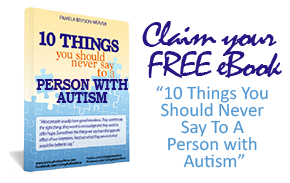
Photo Credits: Marnie’s Keep Fresh
Do you have a special autism diet for your child? John’s dietary regimen had been a roller coaster ride when he was younger. It’s either he can’t live without pizza and fries, or he can’t settle down without eating cake or sweets. Luckily, I was able to come across a special diet that helps enhance our mitochondrial function when he was around 9 years old and had stood by the same healthy regimen ever since.
Mitochondria or Energy Factories
After reading from various resources, I came across an article on Dr. Mercola about a high-fat, high-fiber diet that optimizes the functions of our cells’ mitochondria. Known to be the “energy factories” of the body, it delivers not just needed energy and enhanced metabolism for health and vitality but also the ability to a more improved focus on concentration. Embedded deep into our body’s cells, these little organelles are the very diminutive factories that turn every morsel of food we eat and the air we breath into usable energy.
We actually have quadrillions of mitochondria in our body and each organelle is power-packed with around 17000 of biochemical components needed to produce ATP, the body’s main fuel. As a rule of thumb, the more functional a bodily organ, the more mitochondria are lodged in the cells. This is why the brain, heart and muscles are filled with mitochondria to the brim. In fact, research confirms that our current health and fitness level often reflect the density of mitochondria in these organs. A quick mind often has more mitochondria and so does stronger and leaner musculature.
Mitochondria-Focused Diet
I have also came across with many families who have kids with genetic issues and they also find this diet truly helpful. Certain conditions like autism, with kids being almost “naturally” picky eaters, can expose them to deplete the mitochondria functions in the cells leading to debilitating side effects such as allergies, infections, and outright accumulation of toxins in the body. Instead of helping their child with autism or other developmental disorder strengthen their foothold, it causes them to deteriorate.
To bolster mitochondria function and improve metabolism and energy while enhancing their ability to focus and concentrate, the following sums up what I have been doing all these years to make John’s diet as autism-friendly as possible:
- Fill your child’s meal– from breakfast to dinner and snacks in between– with fresh vegetables. Think green like broccoli, spinach, arugula, kale, and bok choy; bright-colored ones like beets, sweet potato, squash and carrots. Whether fruit or vegetable, tomatoes are also staple to John’s diet. He particularly loves it on his omelet along with yellow and red bell peppers. Sulfur-rich vegetables like cabbage and cauliflower and dried fruits are also great sources of glutathione, a potent antioxidant. You can top cereals with fruits or make a daily smoothie combining both elements for an enjoyable fix anytime of the day. Fruits, however, must be consumed in moderation due to their fructose content. During avocado season, John would love a smoothie as he organize things around. He also loves ripe mangoes and nuts.
(My John usually helps out in the kitchen every Wednesday to give me some time to rest. Here, he was preparing a fantastic organic salad with mixed vegetables from the local farmers market and almonds.)

- Protein and fiber are also two other elements present in John’s diet. From eggs to grass-fed meat, poultry, fish, and other dairy products, we always choose to buy organic for their safety and optimal health benefits.John particularly love green peas and mung beans as well as raspberries and strawberries.
(For protein, John here decided to go with organic chicken burgers with lots of healthy toppings that he loves– organic pickles in brine, kimchi, salsa, sauerkraut, and other veggies.)


- Grains and sugars must be eaten minimally or none at all. This includes white breads, pasta, corn, potatoes, and other grain products. Soda and softdrinks as well as powdered juices are complete no-nos. I use honey instead of sugar when John fancies chamomile or lavender tea during “chaotic” days.
- Build-up mitochondrial membranes by taking omega-3 rich foods. This means eating wild-caught fish like salmon or grass-fed meat like beef. Avocados, nuts, and other seeds are also excellent sources of good fatty acids. So does olive oil and coconuts. We love munching on manzanilla olives, raw nuts and dried watermelon seeds every now and then.
- Even without colds or flu, I always have bone broth ready. What I do is place bones like beef, pork or chicken in a crockpot and then, allow it to simmer for an hour or more with water and apple cider vinegar. John love slurping on them with spinach or bok choy during cold days. It’s high in amino acids. The gelatin-y compound on this broth is also what helps support proper digestion particularly to individuals with autism and their gut problem.
Trust me, it’s going to be hard but only on the first two to three weeks. When you finally become so accustomed to home-cooked meals, you and your family will find it so much better to bond around during meal times and enjoy a nutritious fare each time.
Do you have some special recipes which you think have highly helped in your child’s autism? Share it with us.
AutismAwareness, AutismDiet, Autism, Health, Fitness, Foods4Autism, HomeCooked, AutismParenting
